Family Papilionidae | Genus Papilio Rank Species | |
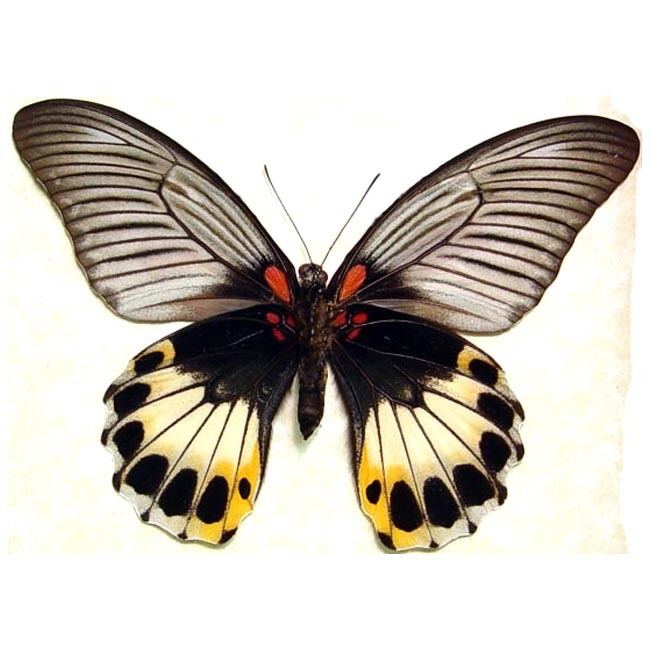 | ||
Similar Papilio protenor, Papilio helenus, Papilio polytes, Graphium sarpedon, Papilio | ||
Papilio memnon on sambucus javanica taiwan shihmen dam 10 viii 2014
Papilio memnon, the great Mormon, is a large butterfly native to southern Asia that belongs to the swallowtail family. It is widely distributed and has thirteen subspecies. The female is polymorphic and with mimetic forms.
Contents
- Papilio memnon on sambucus javanica taiwan shihmen dam 10 viii 2014
- Gynandromorph papilio memnon feeding
- Range
- Status
- Description and polymorphy
- Typical form agenor
- Female form butlerianus
- Female form alcanor
- Male and female form polymnestoroides
- Habitat
- Behaviour
- Life cycle
- References
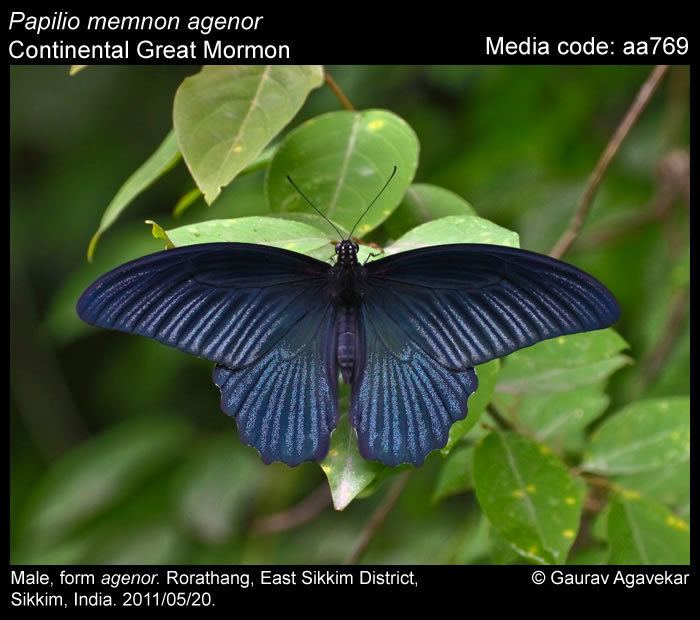
Gynandromorph papilio memnon feeding
Range
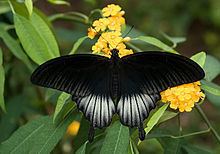
Its range includes north-eastern India (including Sikkim, Assam and Nagaland), Nepal, Bangladesh, Myanmar, Nicobar Islands, Andaman Islands (stragglers only), western, southern and eastern China (including Hainan), Taiwan southern Japan, Ryukyu Islands, Thailand, Laos, Vietnam, Kampuchea, Malaysia and Indonesia (Sumatra, Mentawai Islands, Nias, Batu, Simeulue, Bangka, Java, Kalimantan and the Lesser Sunda Islands).
Status
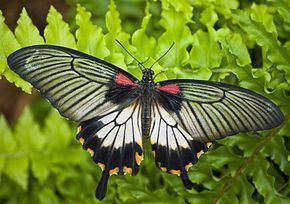
This species is common and not threatened. The cultivation of citrus all over Southern Asia provides an abundance of food plants.
Description and polymorphy
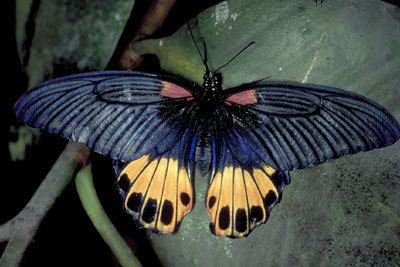
The butterfly is large with a 120 to 150 millimetres (4.7 to 5.9 in) span. It has four male and many female forms, the females being highly polymorphic and many of them being mimics of unpalatable butterflies. This species has been studied extensively for understanding the genetic basis for polymorphy and Batesian mimicry. As many as twenty-six female forms are reported.
Typical form agenor
Female form butlerianus
Female form alcanor
Male and female form polymnestoroides
Habitat
This species flies up to 2,100 metres (6,900 ft) in the Himalayas, but is most common at low elevations.
Behaviour
This butterfly is found in forest clearings. It is very common and is also seen amongst human habitation. It visits flowers of Poinsettia, Jasminum, Lantana, Canna and Salvia. It usually flies 2 to 4 metres (6 ft 7 in to 13 ft 1 in) above the ground. The butterfly is known to mud-puddle. The males are much more common than females. The female forms butlerianus and alcanor are especially uncommon.
Life cycle
The larva resembles that of the common Mormon (P. polytes), being green with whitish markings. It is heavily parasitised.
